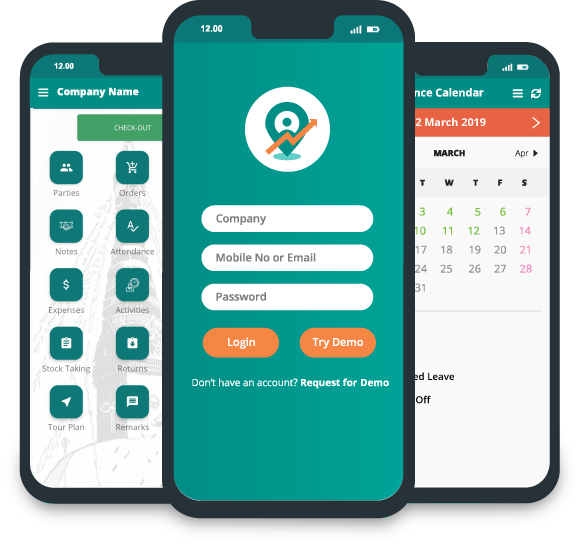Automating Sales Orders for Office Supply Businesses
_(1)_(15)_1744005379.png)
In the fast-paced world of office supply sales, efficiency isn’t just a competitive advantage — it’s essential for survival. Whether you're supplying paper and ink to small businesses or managing bulk orders for large corporate clients, every delay or manual error in processing sales orders can lead to lost revenue, dissatisfied customers, and mounting operational costs.
That’s why more office supply businesses are turning to sales order automation. By streamlining how orders are placed, processed, and fulfilled, automation doesn’t just save time — it transforms the entire sales cycle into a smoother, smarter, and more scalable system.
In this blog, we’ll explore what sales order automation really means, why it’s a game changer for office supply businesses, and how to implement it without disrupting your daily operations.
Challenges of Manual Sales Order Processing
Before diving into automation, it’s worth understanding the problem. Many office supply companies — especially those that have grown quickly — still rely on a patchwork of manual processes for managing orders. These typically involve:
- Phone and email-based ordering
- Manually entering order data into spreadsheets or legacy ERP systems
- Verifying inventory and pricing by hand
- Printing physical invoices and order confirmations
- Chasing approvals or clarifications over multiple emails or calls
These steps not only consume valuable time but also open the door to errors: incorrect quantities, pricing discrepancies, missed delivery deadlines, and customer miscommunication.
Worse, as order volume increases, so does the workload — often without a corresponding increase in staffing. That means teams get overwhelmed, mistakes happen more frequently, and customer service suffers.
Automation offers a way out of this cycle.
What Is Sales Order Automation?
Sales order automation refers to the use of software and digital systems to handle the end-to-end process of receiving, validating, processing, and tracking customer orders — without the need for constant human intervention.
In the context of office supply businesses, this typically involves:
- Digital order entry: Customers can place orders through an online portal, integrated eCommerce platform, or mobile app.
- Automatic data capture: Orders submitted via email can be automatically read and converted into structured order data using OCR (Optical Character Recognition) or email parsing tools.
- Real-time inventory sync: Systems instantly check inventory levels to confirm availability.
- Automated approvals and confirmations: The system routes orders for necessary internal approvals and sends immediate confirmations to the customer.
- Seamless integration: Orders flow into ERP or accounting systems without manual re-entry.
The result? Orders move faster, with fewer errors, and require less back-and-forth between sales, fulfillment, and finance teams.
Business Case for Automation in the Office Supply Sector
Office supply businesses face specific challenges that make automation not just useful, but urgent. Let’s break down a few of the biggest drivers:
1. High Order Volume, Low Margin
The average office supply business processes a large number of relatively low-cost transactions. From pens and notebooks to printer cartridges and folders, each order may be small, but the sheer volume adds up quickly.
Manual processing for high-volume, low-margin products is a recipe for inefficiency. Automation reduces the cost per transaction, making your operations more profitable at scale.
2. Complex Customer Requirements
B2B customers often require custom pricing, unique SKUs, recurring delivery schedules, and multi-location fulfillment. Managing all these nuances manually is both time-consuming and error-prone.
Automation tools can store customer profiles, pricing rules, and shipping preferences, ensuring that orders are processed exactly how each client expects — every time.
3. Speed Expectations
With the rise of eCommerce giants, expectations around speed and transparency have skyrocketed. Your customers want to know:
- Is the item in stock?
- When will it arrive?
- Can I track it?
Automated systems provide instant answers to these questions — and make it easy to meet (or exceed) customer expectations.
4. Integration with Modern Tools
Many office supply businesses now use platforms like Delta Sales App, QuickBooks, Zoho, or industry-specific ERP systems. Automation ensures that your sales orders sync across platforms in real time, keepinginventory, accounting, and sales data up to date — with no manual exports or uploads.
How to Implement Sales Order Automation (Without Breaking Things)
One of the biggest concerns for office supply businesses is that adopting automation might disrupt daily operations. The good news is that most automation tools are designed to integrate with your existing systems and workflows. Here's how to approach it:
1. Start with the Customer Experience
Begin by understanding how your customers prefer to place orders. Do they use email? Do they call a rep? Do they want a self-service portal? Choose an automation solution that supports your dominant channels.
For example, if 70% of your orders come via email, using an email-to-order tool with OCR might be your first step. If customers prefer a self-serve experience, setting up an eCommerce portal linked to your inventory system would be more effective.
2. Map Your Current Order Workflow
Document how orders currently flow through your organization — from receipt to fulfillment. Identify where delays or errors most commonly occur. These become your automation priorities.
Are reps spending hours retyping email orders into your ERP? Are warehouse staff manually checking paper orders? These are prime areas for improvement.
3. Choose the Right Tools
Look for automation platforms that offer:
- ERP or accounting integration
- Inventory syncing
- Rule-based order routing
- Multi-channel input (email, web, EDI, mobile)
- Custom pricing logic
- Customer profiles and preferences
4. Train Your Team
Change is always easier when people are involved early. Train your sales reps, customer service team, and fulfillment staff on how the new process works. Show them how it saves time and makes their jobs easier — not harder.
Make sure they can troubleshoot small issues and escalate larger ones appropriately.
5. Pilot, Then Scale
Don’t roll out automation to all customers and products on day one. Choose a few customers or a specific product category and pilot the new process. Use that experience to refine workflows, fix integration bugs, and build confidence before scaling.
What Results Can You Expect?
The impact of automating sales orders in office supply businesses can be significant — and often surprisingly fast. Companies that implement automation typically see:
- 30–70% faster order processing times
- Reduced order errors by up to 90%
- Improved cash flow through faster invoicing and fewer disputes
- Higher customer satisfaction from quicker confirmations and deliveries
- Freed-up employee time, allowing staff to focus on upselling or support rather than data entry
In short, automation helps you do more with less — while offering a better customer experience.
Final Thoughts
The office supply industry may not be known for rapid innovation, but in today’s economy, standing still is not an option. Automating your sales order process is no longer a luxury — it’s a necessity.
Whether you're a regional distributor or a growing national supplier, embracing automation allows you to cut costs, reduce human error, speed up service, and delight customers. And unlike many technology overhauls, sales order automation can be implemented incrementally with immediate benefits.
Now is the perfect time to modernize your sales operations — not just for efficiency’s sake, but to future-proof your business in a changing market.









